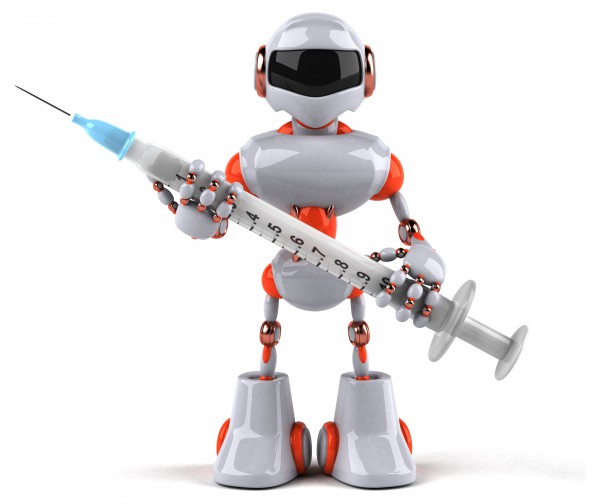Microsoft technology invites non-human nurses into your home -- will you let it in?

Technology is increasingly changing our lives. It seems like every day, a new technological advance is revealed that impacts humanity. Virtual reality masks like Oculus, Samsung Gear VR and Google Cardboard, for example, are changing the way we look at the world. You can travel anywhere by simply looking through a face-mask -- you can take a vacation without leaving your living room.
As the world's population lives longer, and continues to engage in self-destructive behavior, healthcare is one of the few industries guaranteed to never slow down. Unfortunately, as more and more people become insured by Obamacare, getting an appointment with a healthcare professional is getting increasingly difficult. If we can't produce more doctors and nurses, we could have a crisis. What if, however, nurses and doctors didn't have to be human? What if a non-human could come into your home and examine you? A popular Microsoft technology is making this a reality.
"Silicon Valley-based Sense.ly is working to bring a human face to telemedicine. The company's Kinect-powered 'nurse avatar' provides personalized patient monitoring and follow-up care -- not to mention a friendly, smiling face that converses with patients in an incredibly lifelike manner. The nurse avatar, affectionately nicknamed Molly, has access to a patient's records and asks appropriate questions related directly to the patient's past history or present complaints. She has a pleasant, caring demeanor that puts patients at ease. Interacting with her seems surprisingly natural, which, of course, is the goal", says The Kinect for Windows Team.
The team further explains, "a growing number doctors and hospitals are recognizing the value of applications such as Sense.ly. In fact, the San Mateo Medical Center is one of several major hospitals that have recently added Molly to their staff, so to speak. The value of such solutions is particularly striking in handling patients who suffer from long-term conditions that require frequent monitoring, such high blood pressure or diabetes".
![]()
"Molly" (seen directly above) should help patients, healthcare professionals and insurance carriers. A Windows machine and Kinect accessory are easily achievable components, making this relatively realistic.
Patients will have more time for themselves, as they may not have to wait in line to see a doctor or nurse. The Kinect-based solution can be installed in a patient's home or in a local clinic. Not to mention, some sick people may avoid monitoring their health due to long waits and inflexible office-hours; Molly doesn't need to sleep, go to the bathroom or take a vacation. A patient that has greater access to a healthcare professional -- human or not -- should ultimately be healthier.
Healthcare professionals will be able to focus on the truly sick, leaving the more trivial or routine things to the non-human Molly. This should free-up time for nurses and doctors, which in turn should lead to improved healthcare for patients. Why? The professionals should gain more opportunities for rest.
Cost-savings is the big seller, however, and insurance carriers may be the big winners. By installing Molly in the home of a patient with a chronic illness, costly trips to the doctor may be avoided. This could, in theory, lower healthcare premiums as the cost of the Kinect hardware decreases.
Would you be open to inviting non-human nurse into your home? Tell me in the comments.
Photo Credit: Julien Tromeur / Shutterstock